Emily Lakdawalla • Sep 29, 2014
Mars Orbiter Mission delivers on promise of global views of Mars
Ever since I first learned about the capabilities of Mars Orbiter Mission's small payload of science instruments, I have been anticipating one type of data in particular: global color views of Mars captured in a single 2000-pixel-square frame. Just days after entering orbit, Mars Orbiter Mission has delivered on that promise. The Mars Colour Camera is one of three payloads on Mars Orbiter Mission that has been activated; Srinivas Laxman tells me that Methane Sensor For Mars and Lyman Alpha Photometer have also been switched on. Two more instruments remain; he's promised a detailed report once all five are activated. (Edit: Steven Clark reported that K. Radhakrishnan announced at the International Astronautical Congress that a fourth instrument has now been activated.)
Here is the first of, I hope, many many beautiful color views of our neighboring planet from Mars Orbiter Mission:
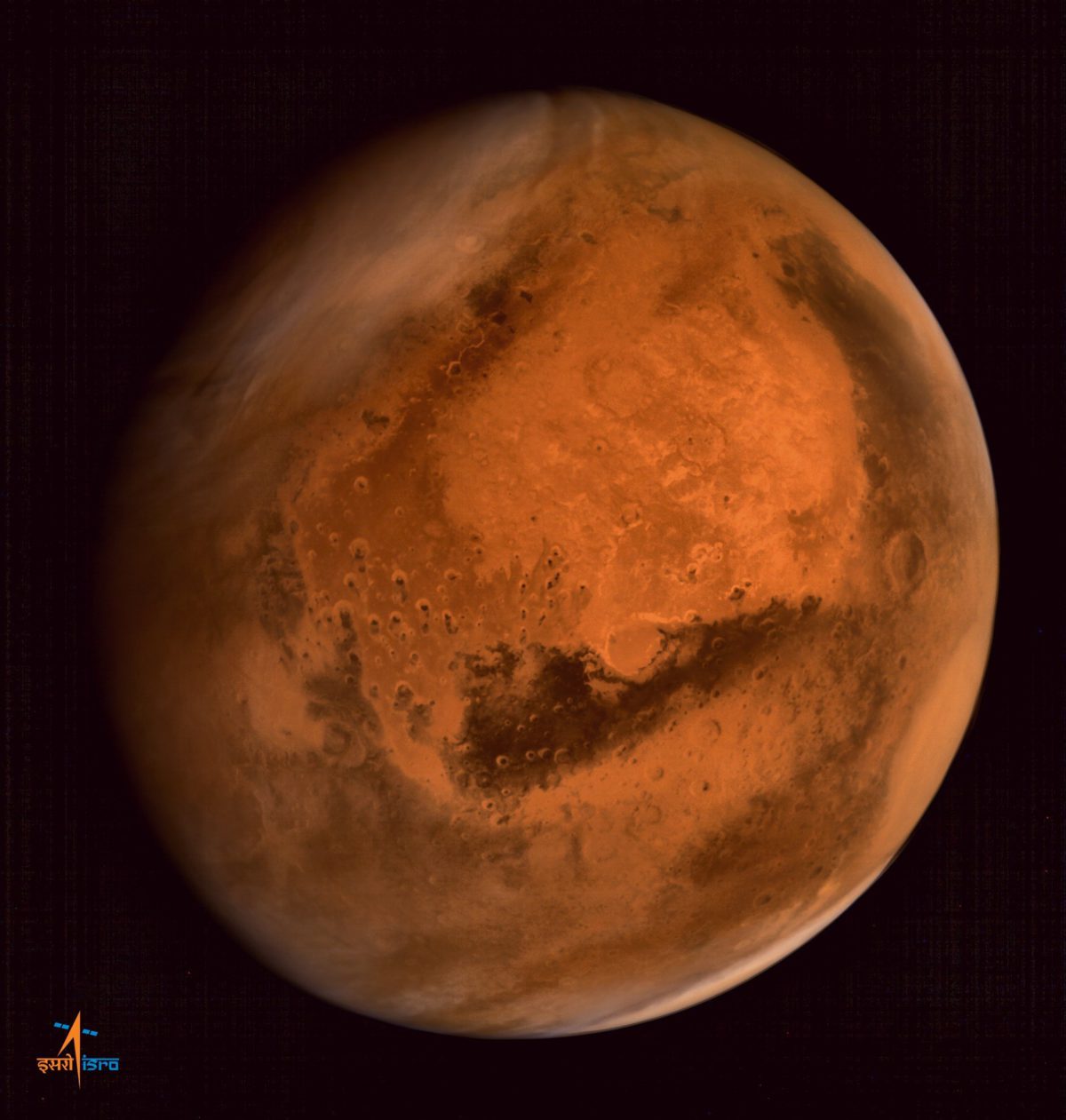
We're looking almost straight at Meridiani Planum, by the way, with the Opportunity rover's landing site located just a bit below the center of the disk. Toward the upper left of the disk, you can see some dusty-looking clouds. Thanks to the Mars Reconnaissance Orbiter MARCI team's Mars weather reports, I can tell you more about those clouds:
Martian weather between 15 September 2014 and 21 September 2014: Regional storm activity picked up in the northern hemisphere, with large storms occurring from Utopia to Arcadia and arcuate-shaped storms following the Acidalia storm track into Chryse. Even in the caldera of Olympus Mons, a small spiral-type, "Lee" dust storm occurred this past week. Dust-lifting was less active in the southern hemisphere, but isolated local storms were observed in Noctis, Aonia, and Noachis. Diffuse water ice clouds were present over the Tharsis volcanoes, Tempe, and over the western rim of Hellas basin. Skies remained storm-free over the Opportunity rover site in Meridiani and the Curiosity rover site in Gale Crater.
Mars Orbiter Mission will only get these full-globe views when it's near the apoapsis of its orbit. But the way elliptical orbits work, the spacecraft will actually spend most of its time near apoapsis, so we should be able to get nice series of global views of Mars, at different phases and of different parts of the globe over time.
When the spacecraft is closer to Mars, we'll get cool images like this one, which was taken just two hours after Mars Orbiter Mission arrived at Mars:
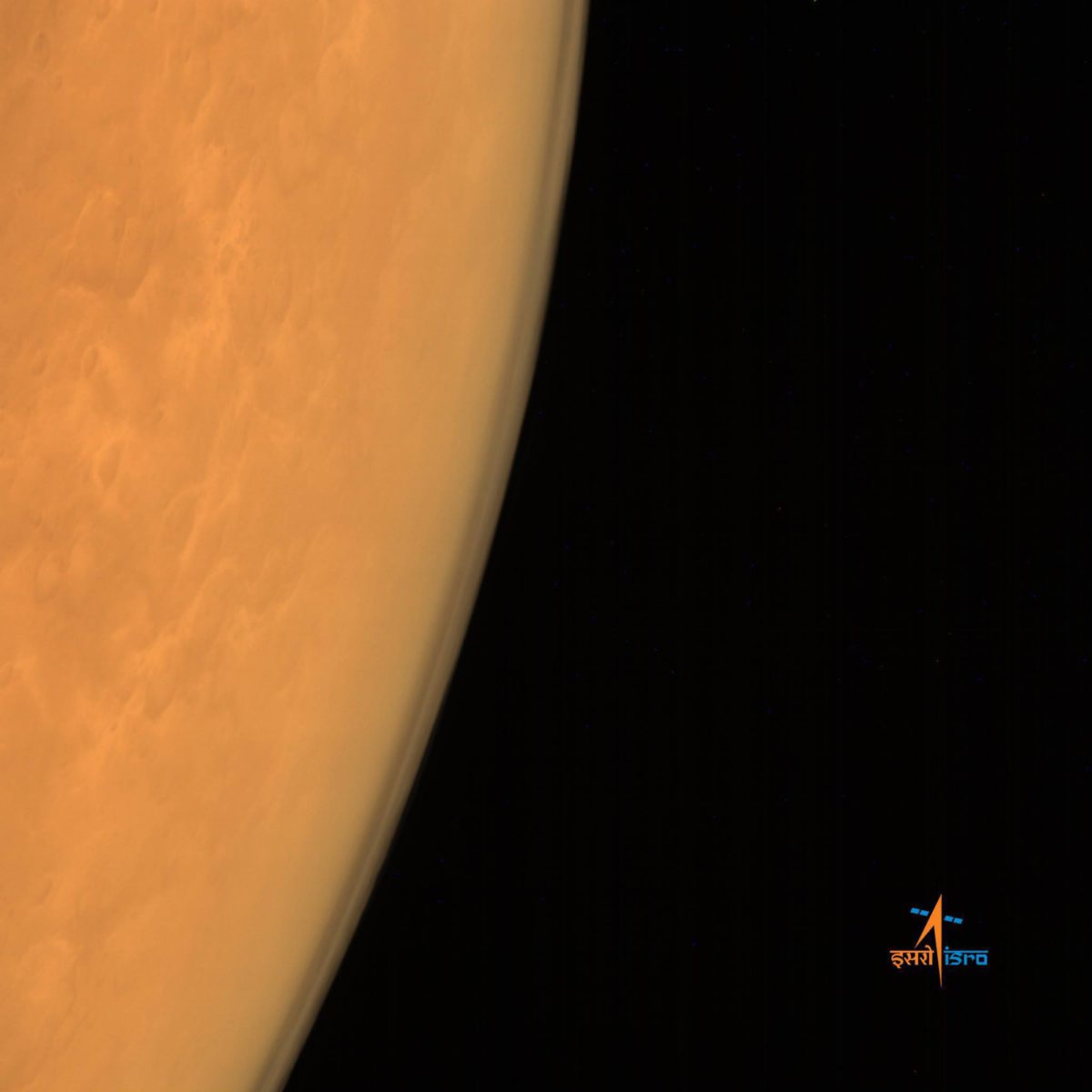
You can barely discern craters and surface features in this image because we're looking through so much Martian atmosphere. But the sharp-eyed folks at unmannedspaceflight.com figured out what we were looking at. Coincidentally, though it's lost in the haze in this image, a feature named Indus Vallis is located within the image frame.
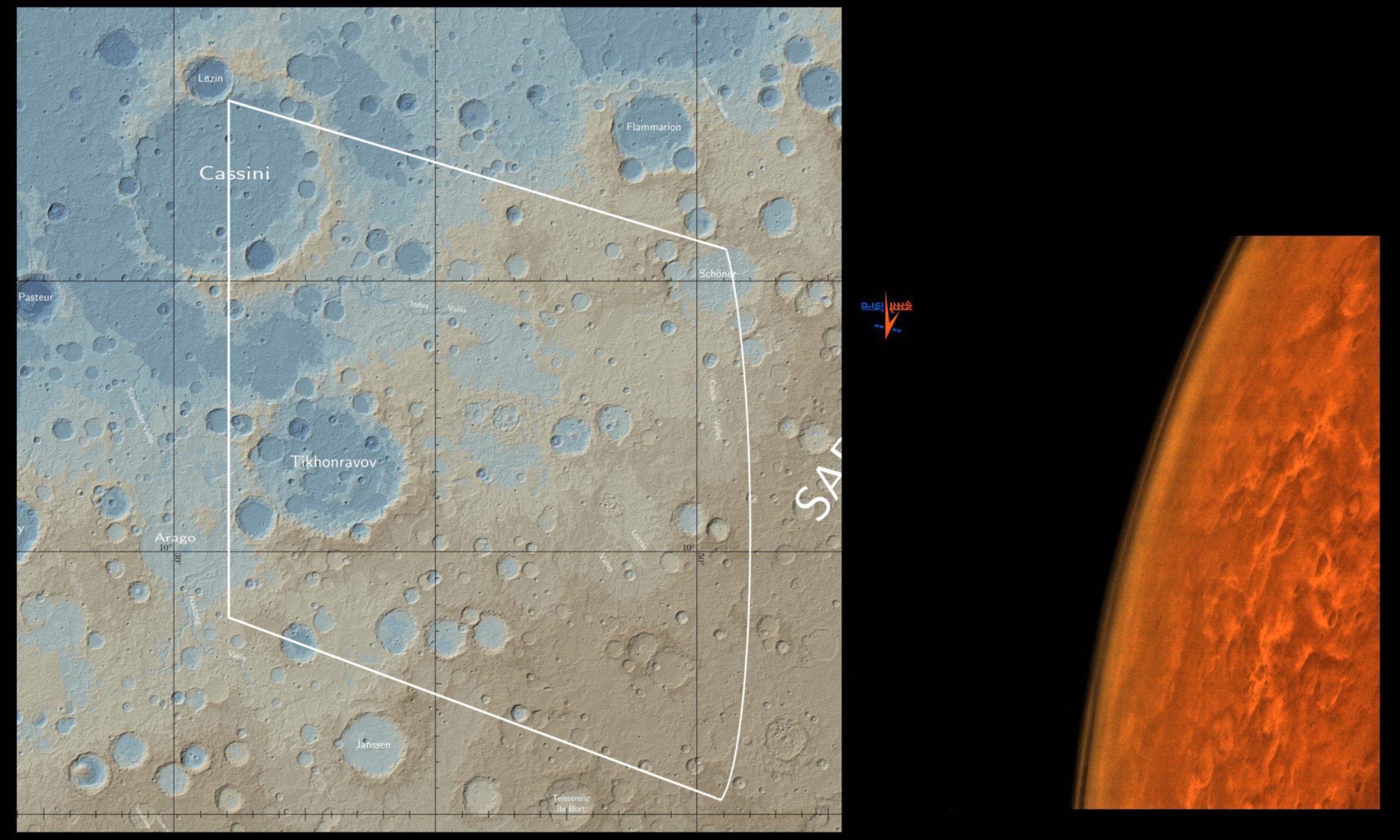
I am so excited about Mars Orbiter Mission's global Mars views. We used to get global views of Mars at every Martian opposition from Hubble, but their resolution was not as high, and Hubble has not been used to image Mars recently. Hubble's best image of Mars, taken more than 11 years ago, shows an almost identical hemisphere, and you can see that the Mars Orbiter Mission photo has superior detail:

But Hubble is not usually so close to Mars as it was on August 27, 2003, so most Hubble images of Mars have even lower resolution. Here is the most recent true-color Hubble view of Mars, taken almost 7 years ago:
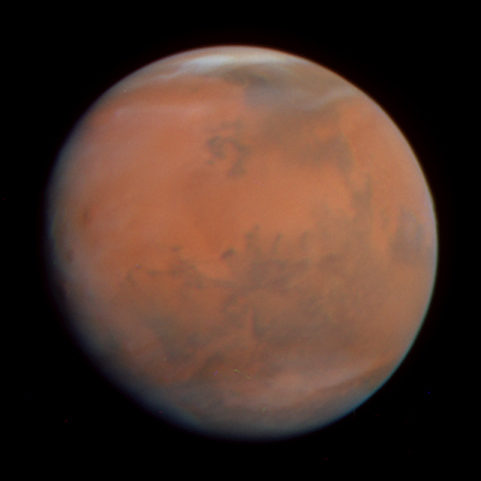
The only other camera currently capable of seeing all of Mars in a single frame is the Visual Monitoring Camera on Mars Express. This is a Webcam-like engineering camera that was included on the spacecraft for the sole purpose of monitoring the departure of Beagle 2. It was repurposed as a camera for public outreach and now regularly produces cool photos of Mars, often in unusual half-lit or crescent phases from high over the poles, but the camera's quality is not that great. (I love the photos anyway.) Here's a sample of what VMC can do:
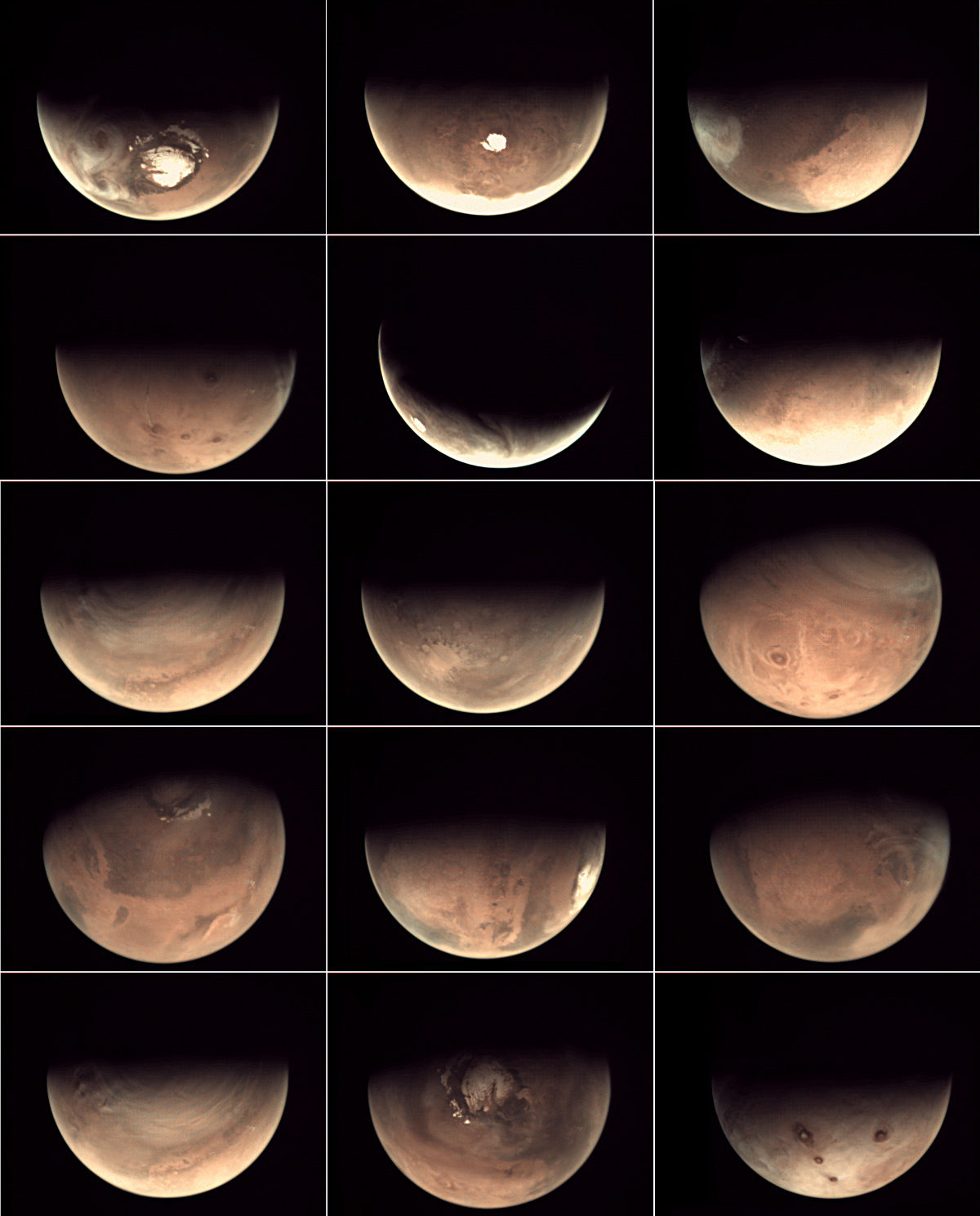
If the Mars Orbiter Mission does nothing else but return to us a variety of global images of Mars from different positions and phases, the mission will be a great success, as far as I'm concerned. It'll be a data set unlike any generated by any other mission, and the single-frame photos should find their way into lots of books and magazines, informing the public perception of Mars for years to come.
Edited to add: Image magician Ted Stryk worked with the Mars Orbiter Mission photo to produce a version that looks more like the colors we expect for Mars -- a subjective, artistic adjustment to the original colors.
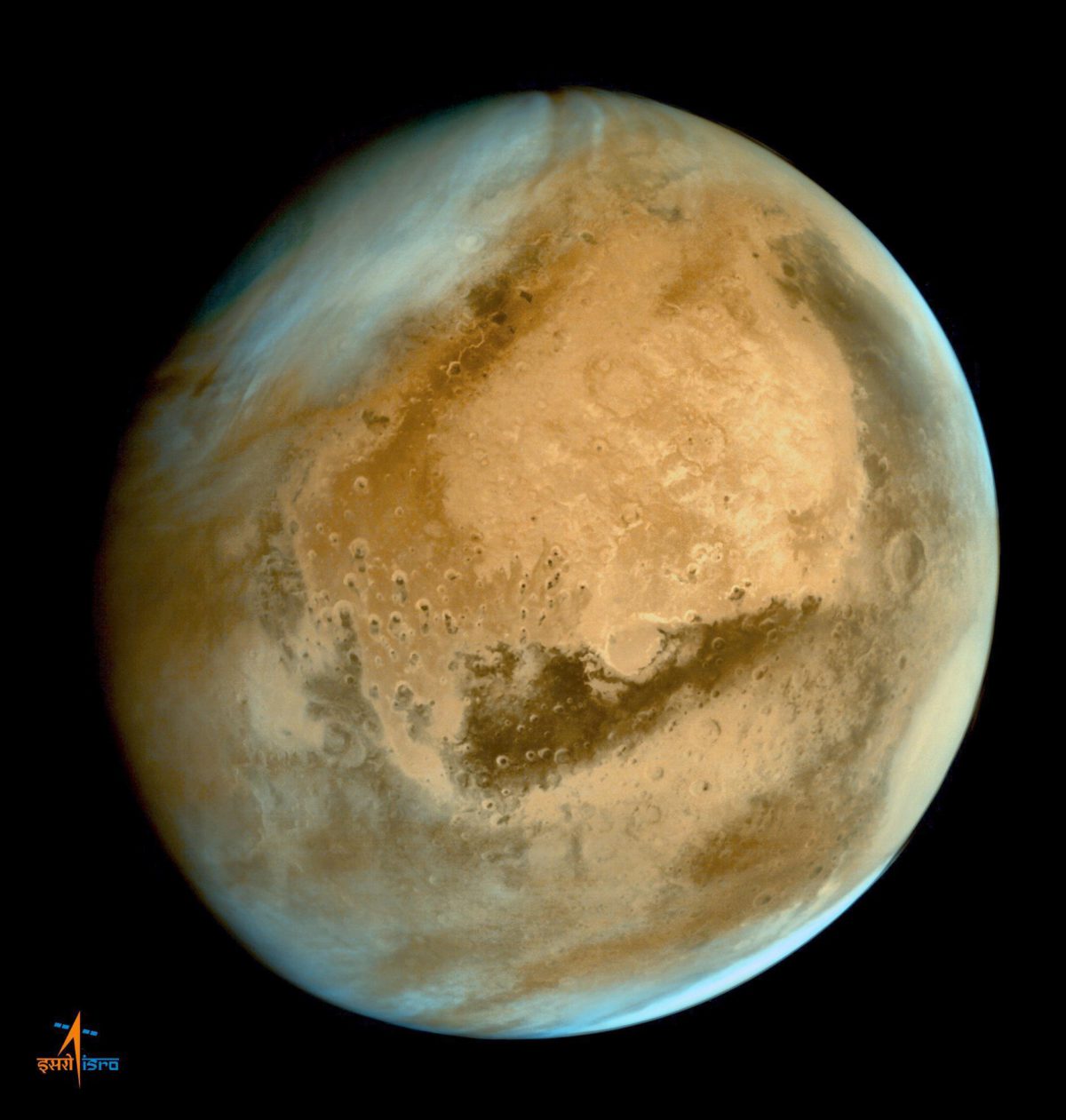
Support our core enterprises
Your support powers our mission to explore worlds, find life, and defend Earth. You make all the difference when you make a gift. Give today!
Donate

 Explore Worlds
Explore Worlds Find Life
Find Life Defend Earth
Defend Earth

